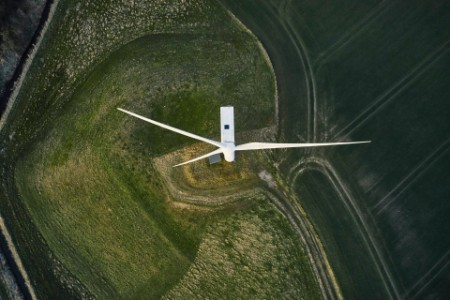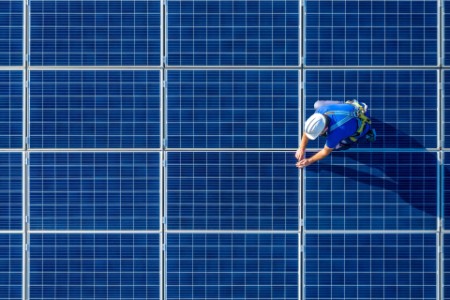How can a proposed business insolvency solve economic problems?
With a rich history dating back more than 80 years, Abengoa Group (Abengoa) is a construction company recognized worldwide for the execution of its renewable energy and water projects.
With a geographical presence that spans 25 countries, annual sales of €1,500m and more than 11,000 employees, Abengoa plays a pivotal role in the wider Spanish economy. “Abengoa is important in terms of footprint and the Spanish image,” explains Jose Carlos Cuevas, Partner at EY-Parthenon Turnaround & Restructuring Strategy.
Abengoa is important in terms of footprint and the Spanish image
The Group’s position within the wider economy therefore made this specific engagement particularly impactful, important and challenging.
Initial attempts
Cuevas sums up the challenge faced by Abengoa quite simply as one that involved “lack of cash” and by 2014, Abengoa had a total debt of around €20b, which was unsustainable.
Given these figures, in November 2015, Abengoa decided to resort to pre-bankruptcy to reach an agreement that would hopefully guarantee its financial viability.
However, this was not successful, and by 2017 and 2019 two debt restructurings had taken place. In August 2020, “Plan Vellocino” was proposed, with new payment plans, government support and bonding line proposals.
Despite all these attempts, by the end of 2020, the situation hadn’t improved and Abengoa still had debt reaching close to €6,000m. In addition, the regional government, Junta de Andalucía, refused to contribute €20m to aid Abengoa.
By February 2021, this string of events left Abengoa at a crucial crossroads – and the Board of Abengoa requested bankruptcy for the parent company, Abengoa SA.

A persistent EY-Parthenon team found the right buyer
EY-Parthenon teams were appointed as insolvency administrators in March 2021. From the start, a unique aspect to this engagement was the media attention. Given the size and impact of this bankruptcy, this was a hurdle both Abengoa and EY-Parthenon had to overcome and engage with regularly throughout the process.
Loan requests
Initially, the EY-Parthenon teams were asked to advise the bankruptcy of the parent company, with the ambition to find an alternative way ahead for the subsidiaries of Abengoa, where the majority of employees and debt were housed.
With support from EY teams, the subsidiaries requested help from the state-owned company SEPI, who are often used as a tool to implement government policy.
The requested support consisted of the application for an ordinary loan of €203m and a participative loan of €46m, together with a €200m bonding line backed by CESCE (the Spanish Export Credit Agency).
Support denied
In June 2022, however, SEPI denied the support with which pre-bankruptcy was requested by the operating subsidiaries, and in November 2022, the main subsidiaries also entered bankruptcy, with EY-Parthenon teams now acting as advisors on both processes.
As insolvency advisors responsible for both bankruptcy proceedings, EY-Parthenon teams were faced with added complexity and new challenges to face. On top of this, because of the high-profile status of the company, “many parties were trying to push for a quick solution”, notes Cuevas.
With added pressure, EY-Parthenon teams were required to lead parallel, overlapping processes that had the potential to significantly impact the Spanish economy, making this particular engagement unique, with a lot at stake.
The scope of proceedings had substantially increased too: the initial bankruptcy of the parent company involved less than €1,000m, whereas the bankruptcy of the main Abengoa subsidiaries involved over €5,000m, approximately 11,000 employees and technical project guarantees of €150m-200m.
In September 2022, a new legal framework around insolvency came into force in Spain. This happened around the time of the second petition for Abengoa. The new legislation was designed to improve the existing legal framework concerning pre-bankruptcy and provide more alternatives. In the long run, this was helpful for both EY teams and Abengoa, but navigating a new set of directives generated new challenges and meant that the bankruptcy of the subsidiaries had to take place under the new European bankruptcy legislations.
Top-class communication and cross-team collaboration
As insolvency administrators, the EY-Parthenon teams led the process and communicated each step of both the old and new business insolvency frameworks through meetings with the multiple parties, including company board and management, investors, judges, more than 22 different financial institutions, public bodies (Ministry, Export Credit Agency, Stock Exchange authorities) and other advisors, ensuring that a fully transparent and agile process was employed.
Detailed communication addressed that stakeholders had timely access to consistent and up-to-date information to facilitate informed decision-making.
Throughout the bankruptcy proceeding, EY-Parthenon teams brought to bear the breadth of skill from across the firm to navigate these challenges and help that the daily operational management of the subsidiaries to continue smoothly.

A global renewable energy company still stands
Finding the right buyer
EY-Parthenon teams led the search for a suitable buyer. The last request for bankruptcy was accompanied by a purchasing offer to maintain the activity and employment of the group. Subsequently, more offers were received both for the entire group (seven offers) or in some cases for some specific subsidiaries (five offers).
EY professionals, as insolvency administrators, analyzed all offers, liaising with multiple institutions and stakeholders to prepare in-depth reports in line with the new legal insolvency framework and detailing the impacts of each bid on the group.
Ultimately, more than 175 reports were made for the judge, credit institutions and public bodies to enable a truly informed decision and secure the right buyer for Abengoa.
The Abengoa bankruptcy has been the second largest bankruptcy in the history of Spain by amount of debt, and the first major bankruptcy under the new Bankruptcy Law, which narrowed the terms and therefore proved a major challenge for EY teams to overcome.
Abengoa carries huge weight in the economies of both Seville and Andalusia, and generates enormous collateral employment throughout Spain. The sale to COX Energy Group saved over 11,000 direct jobs and further ensures that Abengoa can continue to make its valuable contributions to global renewable energy and water projects.
For Antonio Medina Cuadros, Chief of Staff at Cox Energy America, the EY teams were “Excellent, as insolvency administrators; in accordance with the law they have always sought to preserve the interests of creditors and find a solution for the continuity of the group to preserve employment and activity, but prioritizing the rights of all creditors within the group. It was a magnificent effort”.
Alongside this, Cuadros points out that the positive contributions Abengoa has made as a company are not lost through the sale, stating that Abengoa’s “spirit, technology, capabilities, references, and experience in the renewable energy sector are not lost; Cox Energy has taken that on. I believe that says it all”.
Related case studies
The team
Contact us
Like what you’ve seen? Get in touch to learn more.


